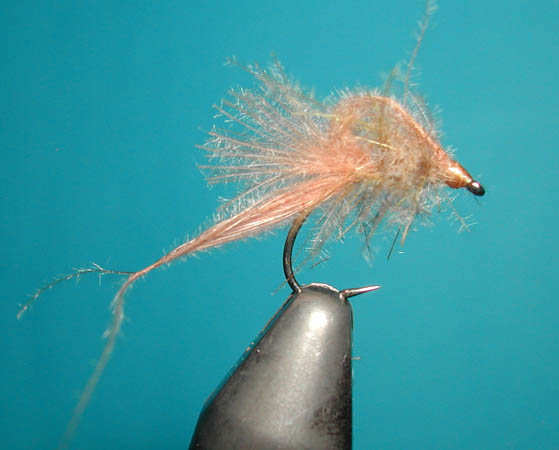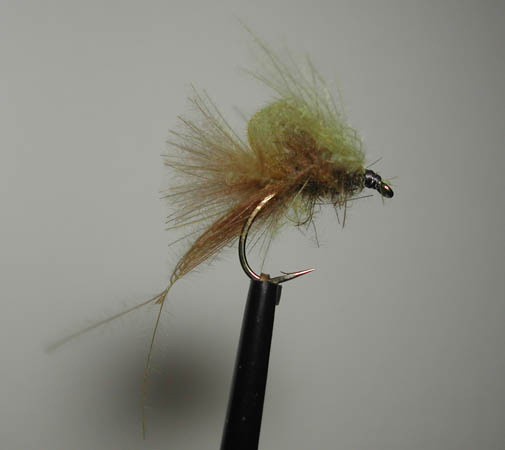The R Nymph
Text and pictures by Agostino Roncallo
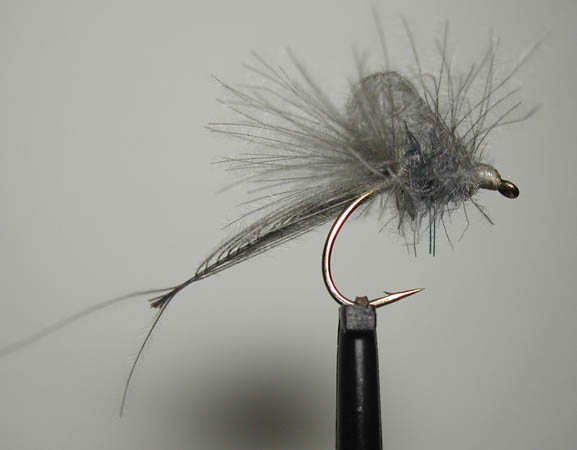
I believe the cliché that artificial flies need to be complicated and difficult to tie is stupid and not valid.
In my opinion, fly patterns must be born of ideas where the simpler and easier they are to tie it the better it is.
Characteristically such flies can be tied using many different materials, but one material provides the best results: Cul de Canard.
With this feather I created my Mirage, which I consider the best fly I have created to date.
See http://www.tomsutcliffe.co.za/fly-tying/139-the-mirage-mayfly-imitation
After developing the Mirage I came to the conclusion that using similar elementary principles it was possible to tie other patterns. Since then using only a single CDC feather I have created imitations of ants, spiders and importantly effective nymphs to imitate emerging mayflies.
In this piece, I show that an imitation of the emerging nymph can be made, like the Mirage dry fly, by converging CDC hackles at a point on the hook to simply create the body and wings of the imitation. In this case, in addition to the body, I also create the wing case of the nymph.
Using this pattern I have caught trout, and grayling in particular, in difficult circumstances in Europe and I believe that its effectiveness stems from its simplicity. In fact, when it gets wet, it closely resembles an emerging mayfly nymph trying to escape from its case.
When I tried the pattern the first few times I was so pleased with the results that I prefaced my name to it and called it the ‘R’nymph!
Dressing
1) While holding a CDC feather to expose the tip, draw back the remaining barbs along the quill in order to form an extended body.
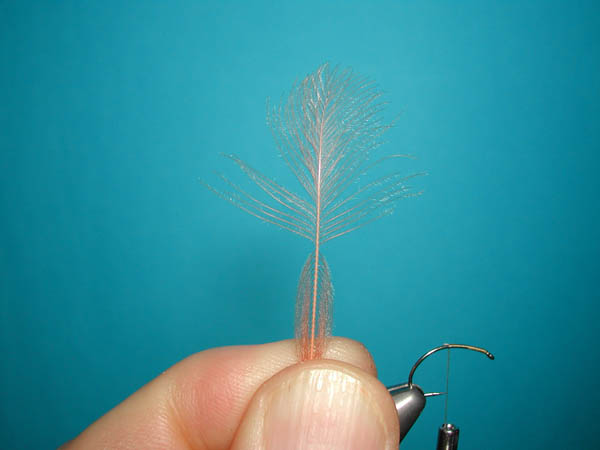
2) Fix the extended body to a grub hook as shown.
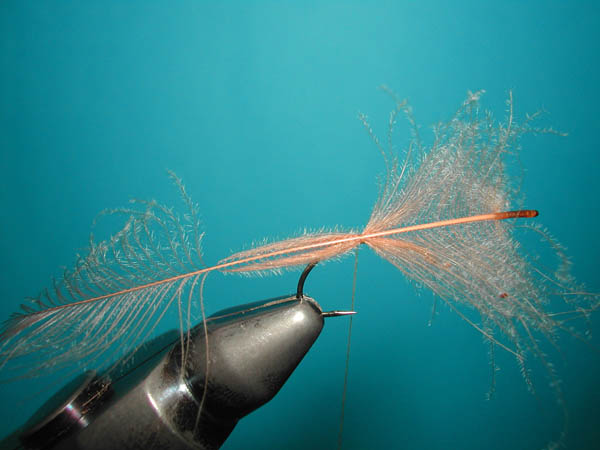
3) At the point of attachment gather up the barbs that exceed the extended body and those at the base of the hackle and trap them with a few turns of thread.
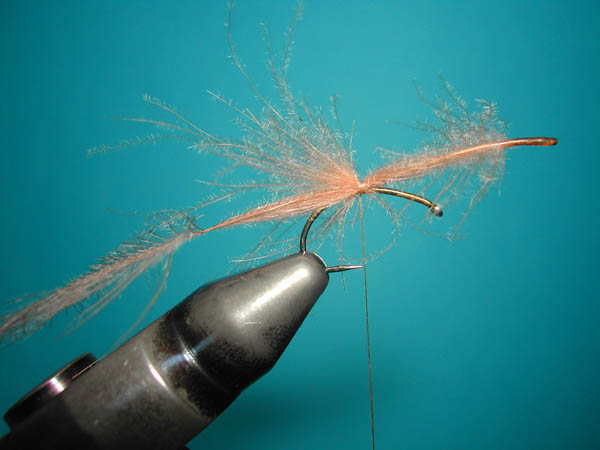
4) Lift the hackle out of the way. Now, using CDC dubbing, cover the front of the hook to create the thorax.

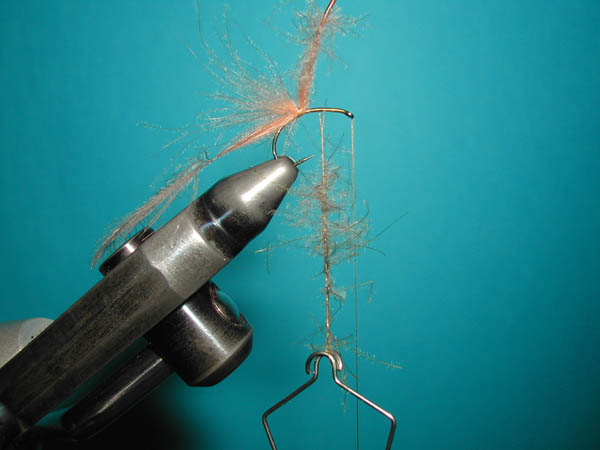
5) Tie off and trim the excess dubbing.
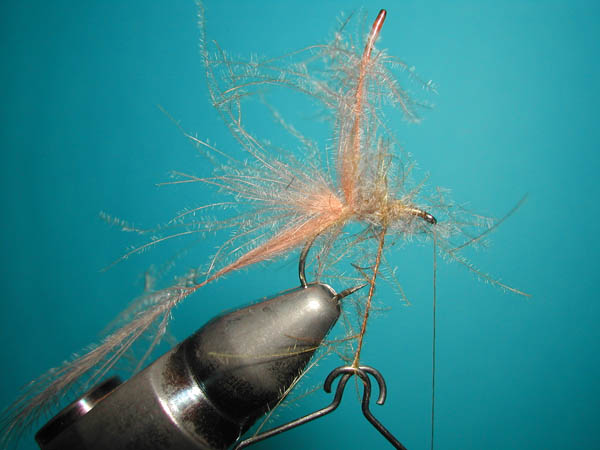
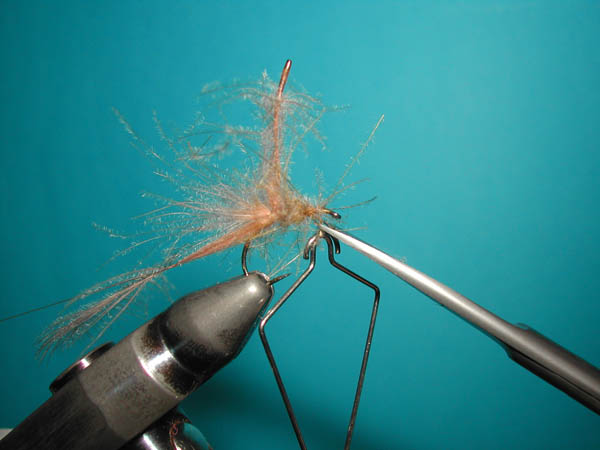
6) Fold the hackle stem over the thorax and trap it near the eye of the hook. Trim the excess.

7) Form the head of the nymph.
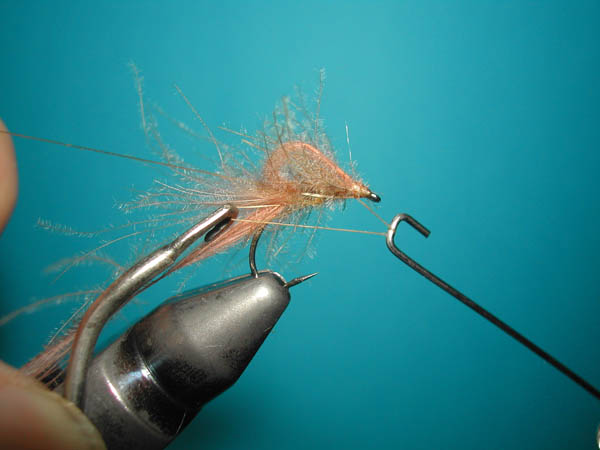
8) Trim the rear facing CDC hackle to represent shortened wings.
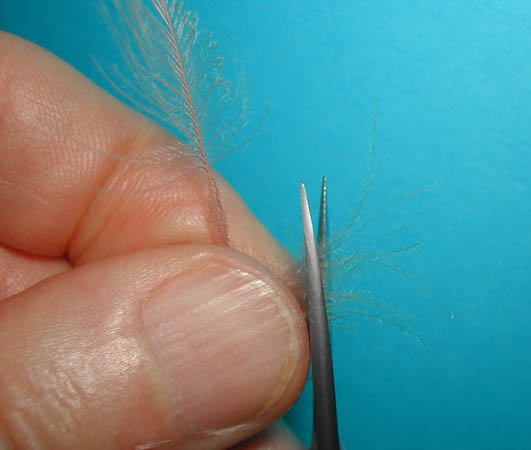
9) Cut the tip of the stem as shown to leave two barbs to imitate the tails.
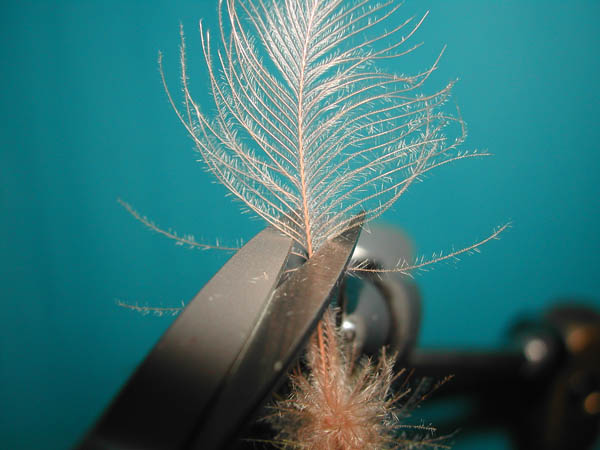
10) Your R Nymph is complete.
